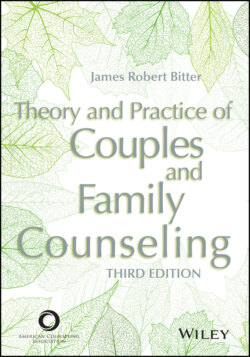Читать книгу Theory and Practice of Couples and Family Counseling - James Robert Bitter - Страница 46
Murray Bowen
ОглавлениеLike Ackerman, Bowen too was a psychiatrist at the Menninger Clinic in the late 1940s; he was originally trained there in psychoanalysis, but his work soon focused on relational family processes. By the early 1950s, Bowen was already working on the relationship between mother and child in schizophrenic families. It was at Menninger that Bowen first experimented with having family members (mother and child) live together in cottages at the clinic. Bowen expanded this experiment when, in 1954, he left the clinic to work at NIMH. At NIMH, Bowen hospitalized whole families of schizophrenic patients for study and research purposes. Bowen was at NIMH for only 5 years before moving to the Department of Psychiatry at Georgetown University. Although Bowen was never able to carry on the level of family research at Georgetown that he had achieved at NIMH, he was able to develop perhaps a more complete family systems theory than any of the early pioneers.
Bowen’s theory was the first to indicate that problems could be transmitted across generations; his model focused on triangulation processes in families and the tendency of family members to engage in emotional reactivity. Bowen also recognized that the family system was often stronger at pulling the therapist into its process (the undifferentiated family ego mass) than the therapist was at getting the family to change. Bowen’s emphasis on differentiation and specifically on one’s differentiation of self started at Menninger, but it was fully developed while he was at Georgetown.
At Georgetown, Bowen offered training programs that would eventually produce some of the most important leaders in family counseling. Phillip Guerin and Tom Fogarty greatly enhanced Bowen’s work with triangles, describing a five-step process for detriangulation in both individual and family counseling (Guerin et al., 1996).
Betty Carter and Monica McGoldrick, both trained by Bowen, would develop the family life cycle (McGoldrick et al., 2015), and Monica McGoldrick would lead the way in the development of genograms (McGoldrick et al., 2020) and our understanding of race, culture, and gender in family practice (McGoldrick & Hardy, 2019). Indeed, without Monica McGoldrick there would not be a fully developed set of lenses on race, culture, and gender.
